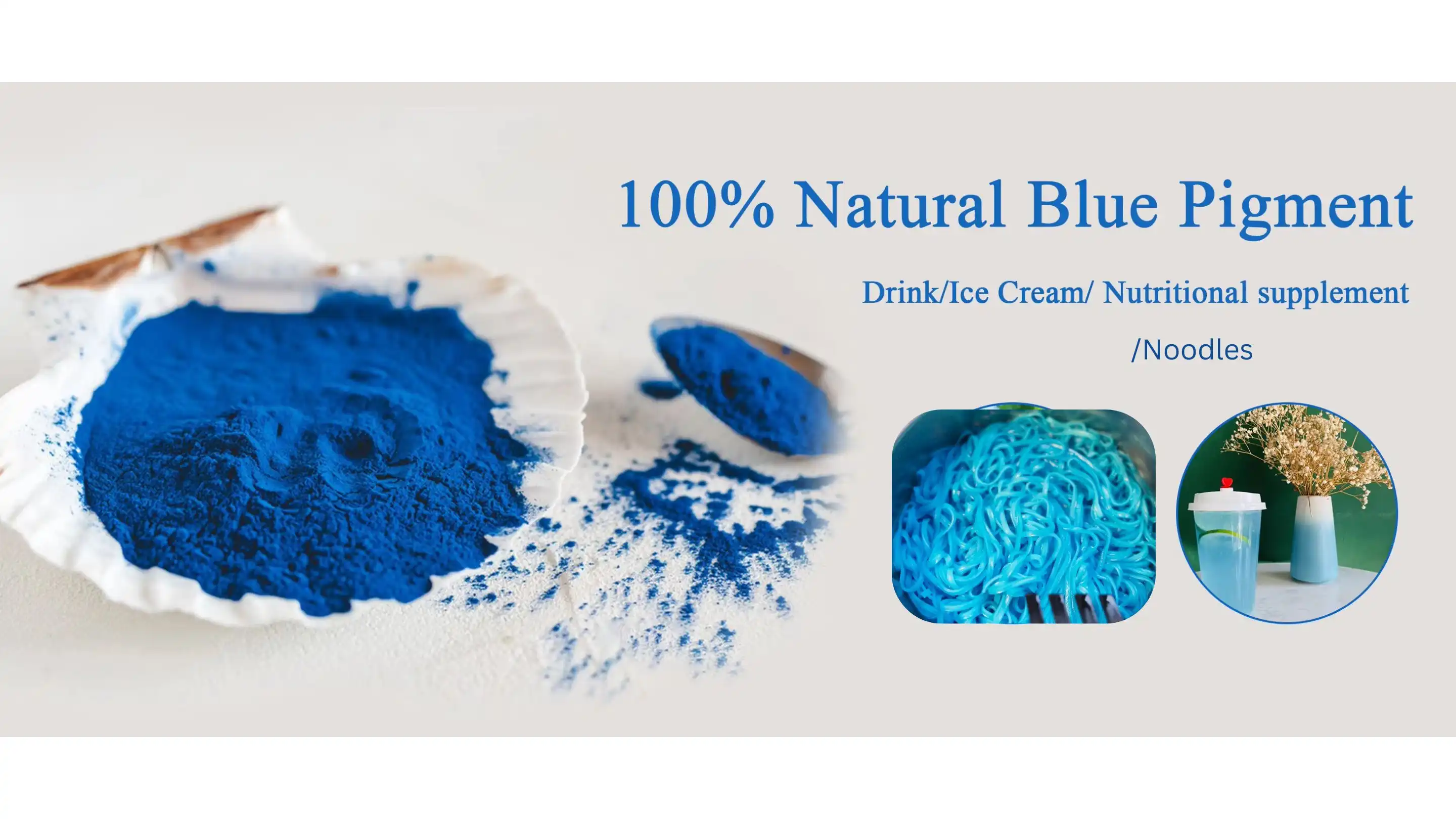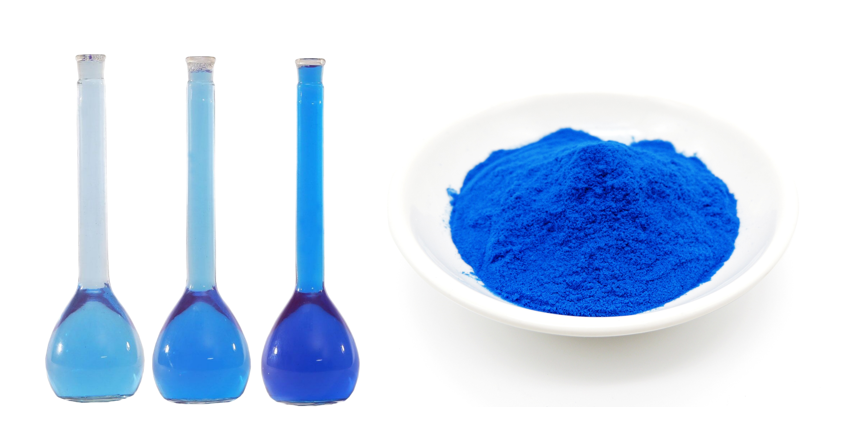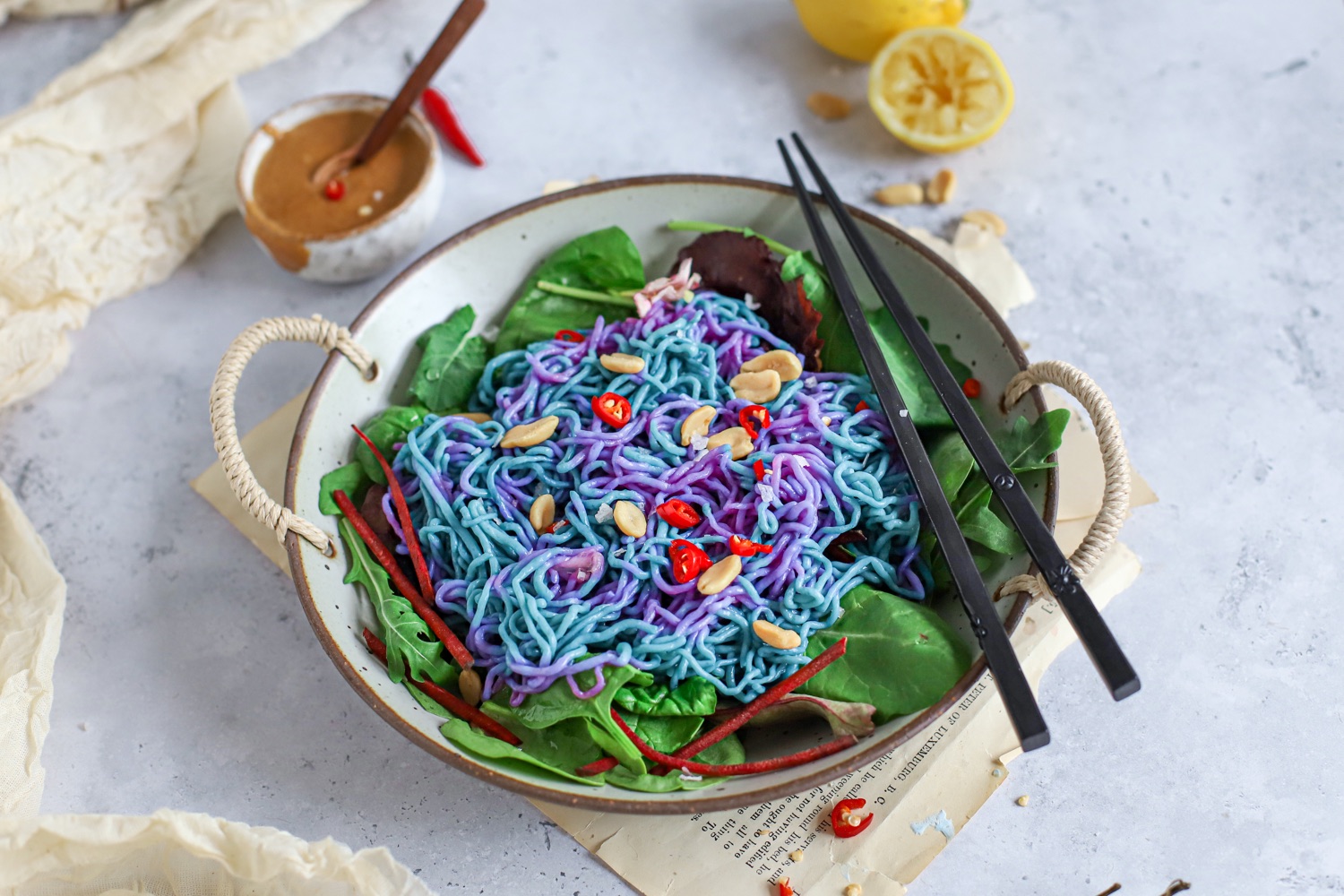Application of phycocyanin in coloring of fillings, noodles and mustard
With increasing focus on healthier, more visually appealing food options, the use of natural colorants has become more popular in culinary innovation. In this category of natural pigments, phycocyanin is unique in its bright blue color and high nutritional value. This blog elaborates on its applications in fillings, noodles, and mustard with a special mention of its special qualities and an example recipe that puts its potential into delicious words.

What is Phycocyanin?
Phycocyanin is a pigment-protein complex extracted from blue-green algae, especially Spirulina. It is a vibrant blue pigment that is used as a natural food dye. Unlike synthetic colorants, phycocyanin is not only a visually appealing ingredient but also an antioxidant-rich and vitamin- and mineral-rich component, making it a favorite among health-conscious consumers.

Nutritional Benefits of Phycocyanin
Phycocyanin is an excellent source of antioxidants, which may help combat oxidative stress in the body. Additionally, it possesses anti-inflammatory effects and might enhance immune function. Moreover, it is said to improve the human body's adaptability to heat, which would make it extremely useful in warm climates where weakness and loss of appetite are very common.

Culinary Application of Phycocyanin
1. Noodles
One of the most exciting applications of phycocyanin is in noodle dishes. One example is a noodle shop in Tokyo, Japan, which has become famous for its "Chicken Clear Soup Green" ramen. This dish contains a bright blue-green soup obtained by the precise use of phycocyanin. The cooking technique called "sweeping the soup" is filtering impurities layer by layer, resulting in a clear, flavorful broth that beautifully showcases the natural color of phycocyanin.

2. Fillings
Phycocyanin can also be used in a variety of fillings, including dumplings or pastries. It gives an attractive blue color to the fillings, thereby enhancing the appearance of traditional dishes. The nutritional benefits add value to the filling, making them not only delectable but also healthy.

3. Mustard
While there is room to innovate regarding old mustard's typical condiment counterpart, with this natural coloration in phycocyanin, manufacturers might end up putting some very natural looking mustard around on the plate.

Phycocyanin further adds bright red color not just to classical mustard but gives its own reasons toward the popularity trend using natural and unprocessed product towards food engineering .
Sample Recipe: Streaked Colour in Noodles by Phycocyanin.
If you are interested in the culinary potential of phycocyanin, why not try making your own phycocyanin-infused noodle bowl? This recipe is quick and easy, but it's also full of nutrients and flavor.
Ingredients
- 1 portion of mung bean noodles or rice noodles
- 1-2 teaspoons phycocyanin
- ½ cup chopped lettuce
- ¼ block tofu (raw or pan-fried with soy sauce)
- Your choice of vegetables (carrots, bell peppers, cucumbers, cabbage, broccoli, bean sprouts, radishes, mushrooms)
- ½ an avocado
- Chopped almonds or cashews
- Lemon or lime juice
- Soy sauce or sauce of choice
- Preparation (20 minutes)
- Cook the Noodles: Cook the noodles according to the package instructions. Once cooked, drain and rinse them well in cold water.
- Mix in Phycocyanin: Place the noodles in a bowl and mix in the phycocyanin until evenly distributed, giving the noodles a vibrant blue hue.
- Combine the ingredients: Put desired vegetables, tofu, avocado, chopped nuts over noodles. Finish with lemon or lime juice and a dash of soy sauce.
- Serve: Mix together and enjoy your colorful, healthy noodle bowl!

Conclusion
The addition of phycocyanin to food enhances aesthetic appeal but also gives various dishes added health benefits. From noodle bowls to fillings and condiments, the natural blue pigment makes all the difference by paving the way for innovative culinary creations. Consumers continue to choose more vibrant, healthier food options, so phycocyanin stands as a versatile and nutritious ingredient that deserves a place in our kitchens. This wonderful natural colorant will definitely be a welcome decoration on your plate and health whether you're testing phycocyanin at home in cooking or simply experiencing a vibrant meal at your neighborhood restaurant.
References
1. Spohrer R, Larson M, Maurin C, Laillou A, Capanzana M, and Garrett GS 2013 Food and Nutrition
Bulletin 34 S50-S61
2. Allen L, de Benoist B, Dary O, Hurrell R 2006 Guidelines on food fortification with micronutrients.
Geneva: World Health Organization
3. Hadiyanto H, Sutrisnohadi S, Sutanto H and Suzery M. 2016 Songklanakarin Journal of Science and
Technology 38 391–398
4. Kumar SB and Prabhasankar P 2015 J Food Sci Technol 52(3) 1404–1413
5. T W Agustini TW, Ma’ruf WF, Widayat W, Wibowo BA and Hadiyanto H 2017 IOP Conf. Ser.: Earth
Environ. Sci. 55 012068
6. Chaiklahan R, Chirasuwan N and Bunnag B 2012 Process Biochemical 47 659–664.
7. Molyneuk P 2004 Songklanakarin J. Sci. Technol. 26(2) 211-21
Send Inquiry
Related Industry Knowledge
- How Can Hydrolyzed Spirulina Protein Transform Your Health?
- The Nutritional Powerhouse: Blue Spirulina Powder Unveiled
- Beetroot Red: A Natural Colorant for Foods
- How long does it take for 5-HTP to start working?
- Feel Good with Organic Powder Turmeric
- Benefits of Lion’s Mane Extract Powder
- How to use mct powder for weight loss
- Cochineal vs. Monascus: Natural Food Colorants
- What is sodium copper chlorophyllin good for?
- Can Lion's Mane Mushroom Extract Help with Weight Loss?


